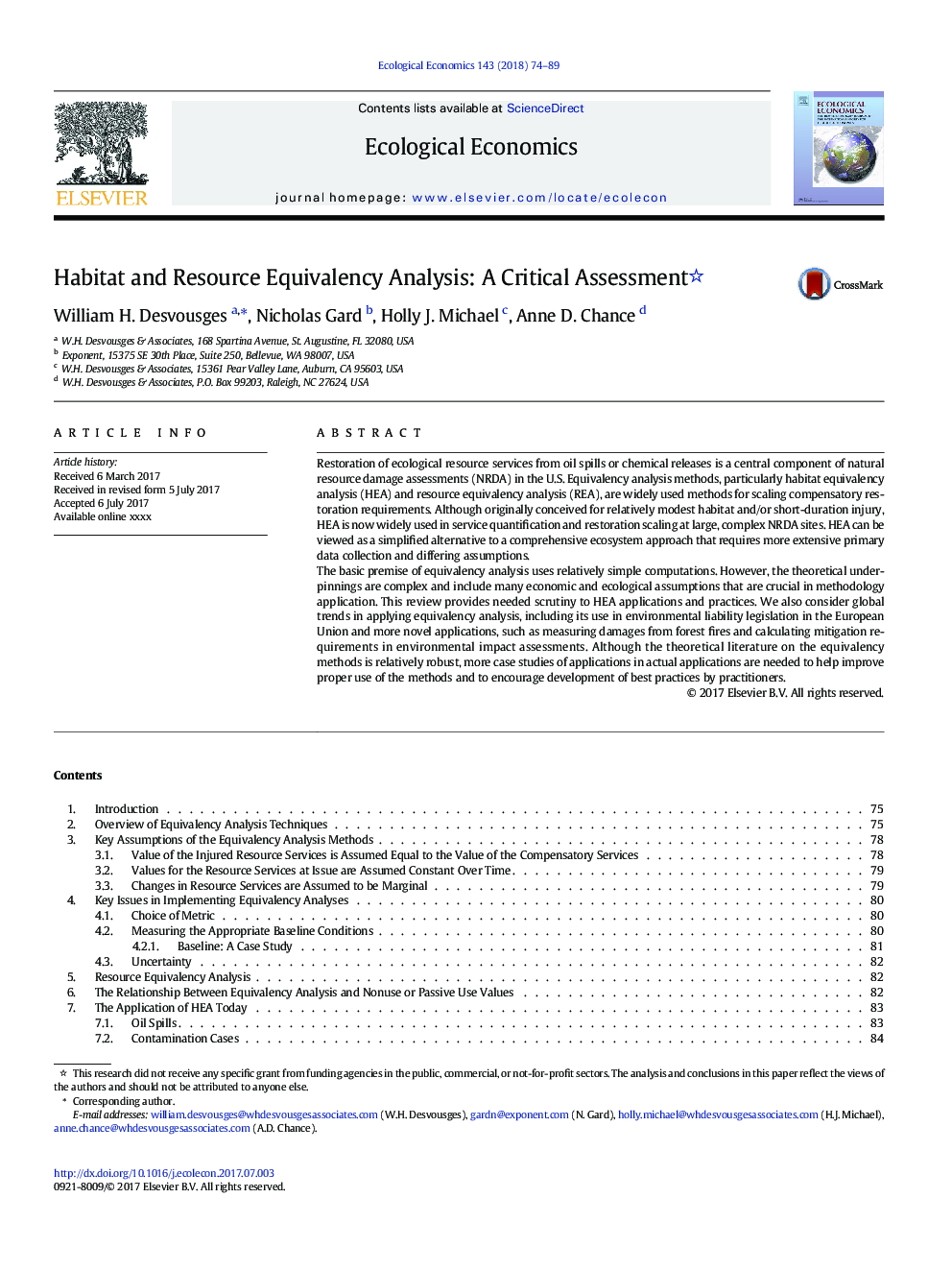| Article ID | Journal | Published Year | Pages | File Type |
|---|---|---|---|---|
| 5048558 | Ecological Economics | 2018 | 16 Pages |
Restoration of ecological resource services from oil spills or chemical releases is a central component of natural resource damage assessments (NRDA) in the U.S. Equivalency analysis methods, particularly habitat equivalency analysis (HEA) and resource equivalency analysis (REA), are widely used methods for scaling compensatory restoration requirements. Although originally conceived for relatively modest habitat and/or short-duration injury, HEA is now widely used in service quantification and restoration scaling at large, complex NRDA sites. HEA can be viewed as a simplified alternative to a comprehensive ecosystem approach that requires more extensive primary data collection and differing assumptions.The basic premise of equivalency analysis uses relatively simple computations. However, the theoretical underpinnings are complex and include many economic and ecological assumptions that are crucial in methodology application. This review provides needed scrutiny to HEA applications and practices. We also consider global trends in applying equivalency analysis, including its use in environmental liability legislation in the European Union and more novel applications, such as measuring damages from forest fires and calculating mitigation requirements in environmental impact assessments. Although the theoretical literature on the equivalency methods is relatively robust, more case studies of applications in actual applications are needed to help improve proper use of the methods and to encourage development of best practices by practitioners.
